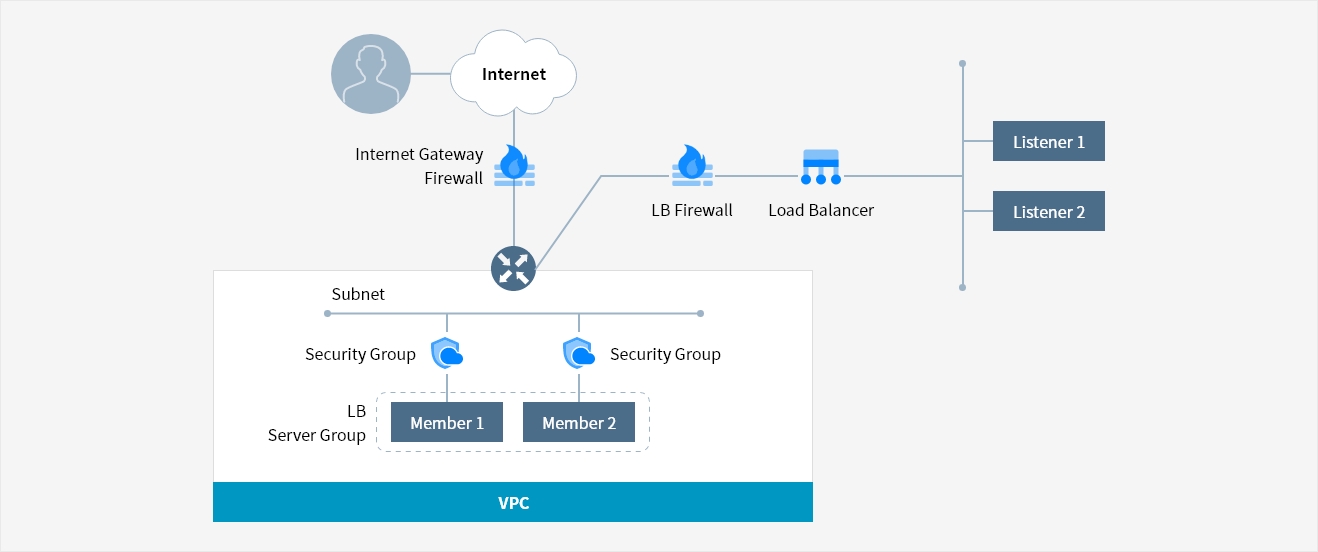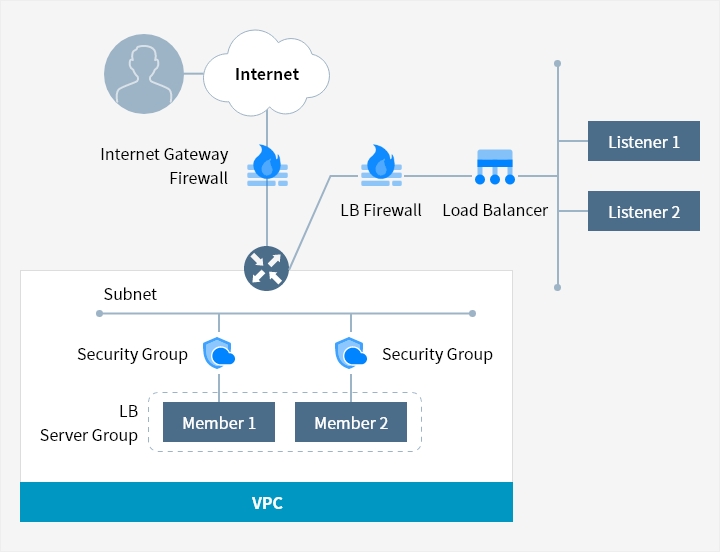
Load Balancer
Automatic Distribution of Server Traffic Load
Overview


-
Various Distribution Methods
The applicable load distribution method offers optimal distribution.
• Round robin : Consecutively deliver distribution requests to designated servers
• Least connection : Assign to a server with least number of connection
• IP Hash : Hash source IP data of a client to assign to an identified server
• Weighted Round Robin : Assign to servers sequentially in proportion to the weight of the members
• Weighted Least Connection : Assign to the best server, taking into account the number of connected servers and the weight of members -
Easy Service Setting
A web-based console helps create listener in Load Balancer and add/mange service conveniently.
-
Higher Security
Load balancer traffic can be controlled using firewalls. A rule can be set up to define how traffic is distributed between load balancers and their servers and clients. And firewall logs are stored in a user’s bucket.
-
Convenient Server Group Management
Creating server groups within the created Load Balancer enables reusing the existing setting to determine rules without repetitive inputs. Replacing all settings is also possible for the Load Balancer service to which a member change using a server group is applied.
Service Architecture


Key Features
-
Creating and managing Load Balancer
- Creating Load Balancer in the subnet of VPC(Differentiate L4/L7 services)
- Setting a service IP(virtual IP) to receive client requests
- Setting a public NAT IP for internet communication
- Configuring firewalls to control access to Load Balancer
-
Creating and managing Listener
- Configuring service ports and protocols(TPC/HTTP/HTTPS) based on Load Balancer service type(L4/L7)
- Configuring traffic processing for protocol and LB server group
- Configuring SSL certificate and security level for HTTPS encryption
-
Creating and managing LB server groups
- Configuring traffic distribution algorithm
- Assigning members to a server group
-
Creating and managing LB health checks
- Use the default template or create a custom health check
- Setting up a member's health check method, such as health check protocols, ports, etc.


Whether you’re looking for a specific business solution or just need some questions answered, we’re here to help